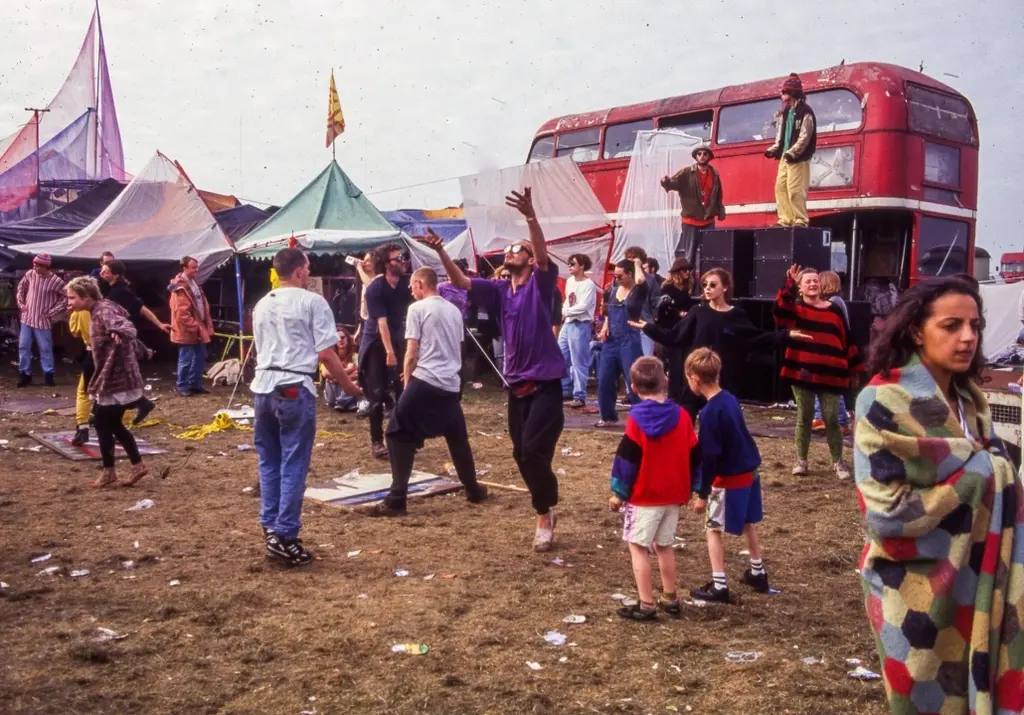Ingenious people and companies making new things out of old stuff
- Text by Shelley Jones

Imagine a world in which we created no waste. It may sound utopian but it’s actually a concept – something called a circular economy – that a lot of environmentalists and designers are working hard to evolve. It requires some ‘end-of-life’-thinking whereby designers design with the future of the product in mind, instead of building something destined for landfill.
Patagonia is a company that leads a lot of innovation in this field and one of their latest projects is a pop-up thrift shop in Village Underground, Shoreditch, East London, November 24-25, where they will be showcasing and selling repaired and customised previously used products.
Keen to find out more about the concept of circular and how consumers and independent start-ups can increase the lifespan of products we caught up with sustainability expert Sophie Thomas – founder of The Great Recovery, an initiative that challenges businesses to make their products more sustainable and reduce their impact on the planet.
So, the basics. For those who don’t know what is a circular economy?
The current way that we produce stuff – the products and things around us – is very much linear. So we take stuff out of the ground, we process them, we purify them, we then make materials and components and from them we make products. And we then sell those products in supermarkets and shops, we use them, and we throw them away. The concept of a circular economy is one where you join the ends together to retain value in a societal loop for as long as possible. That can be in terms of longevity and durability – using things, passing them on, updating software, fixing things; and it can also branch out into things like designing for service and leasing, as part of a sharing economy. Thinking, for example, do we all need to have a washing machine or could we use the laundrette? For a circular economy to work we must be able to take apart broken things and either repair them or reuse certain components. And the other thing for a circular economy to work is increasing recyclability. Currently our products being very co-mingled. For example our mattresses have 18 different materials in them, our mobile phones have 40 different types of elements and 126 different chemicals. Things are put together in a way that you can’t really get the value back out of them.
So who’s making good products with a circular mindset?
There are some fantastic projects going on, on many levels. We talk about circular economy as being this new principle but in fact it’s not, it’s a concept around how we could live more simply and efficiently and some of the ideas have been around for centuries. Think about charity shops – they’re a great example of reuse and repair. Getting your shoes re-heeled, that’s a very good way of extending the life of your shoes.
The fairphone is a brilliant product. It started when people who wanted to campaign around the social impact of the raw materials that go into our products – the tantalum that goes into our mobile phones to make the capacitors in the electronics generally comes from the Democratic Republic of Congo which is a very war-torn area, neither democratic or republic. So they decided their campaign would be built around a product and they designed the fairphone. The first thing they tell you to do when you buy a fairphone is open the box and take the phone apart. So not only are they thinking about the stewardship of the materials going into the phone but they’re also trying to get you to connect with the way the phone is built and how you can upgrade it and how you can repair it.
Interface are also doing great work – taking plastics out of the ocean and making carpets with them. It’s all about having that visionary approach. That’s where success will happen.
What if you’re a small independent company who want to be sustainable but it’s too expensive?
Well it depends what you define as expensive. A lot of the time when we have worked with companies on sustainability strategies – when you start doing all the analysis around cost, and you start including the extraction, environmental and transportation cost it’s often only cheaper in terms of your capital cost. But we need to start thinking about cost more holistically. I think some of the best innovation is happening on a level that is very small. This is a generation that really does care about this stuff. It’s much higher on the agenda. And it’s built right into the mission of a lot of start-ups. And they’re light on their feet and can pilot and test things quicker, and understand the impact of things quicker. Start-ups can be highly disruptive and we spend a lot of time connecting and networking small disruptive start-ups with big corporations that have the resources but need the thinking. I would be really excited if I was an entrepreneur and wanted to work in this area. Although you may think that some doors shut – i.e. buying things in bulk from China – many other doors open, that give you an edge on competitors.
How important do you think is our consumer choice in all of this?
I think it’s a very important political player. It’s an effective tool. We have so much choice now, but do we really need that much choice? Consumers are in a position where they can force a hand and say, ‘This isn’t good enough.’ But consumer choices are only really effective when you have the knowledge behind that choice to back it up… Currently I don’t think we have enough information.
Can sustainable, circular products also be high performance?
Twenty years ago the materials that we had weren’t as good as others. When you used recycled paper you’d have to change your inks because it wasn’t quite as absorbent. But now the technical spec is so high there’s no way you’d be able to tell the difference. And there isn’t that much difference in cost anymore. Technology in terms of material innovation is moving at such a pace. And that’s when consumer pressure comes into play. Look at the example of the beautiful wooden surfboard, that still has to have an epoxy resin around it because there’s no natural-based resin that has the same quality and longevity and specification that it needs. The consumer can pressure the resin manufacturer for a product with a high specification that is not so toxic to the planet. It is about myth-busting to a certain degree. The two myths we always hear is that it’s very ‘hairy jumper’ and expensive, and that’s just not true anymore. Because you’re not comparing like for like. So you may have a new material that is cheaper but it’s not taking in to account the externality costs of getting it out of the ground, and then disposing of it. And when we have to factor in all these different types of costs – when we have to start paying for all these things like Landfill Tax and Individual Producer Responsibility – it’s going to get much more efficient and interesting for business.
The Patagonia Thrift Shop opens at Village Underground, Great Eastern Street, London, on November 24, 6-9pm, and November 25, 9am-9pm.
Enjoyed this article? Like Huck on Facebook or follow us on Twitter.
Latest on Huck

Meet the trans-led hairdressers providing London with gender-affirming trims
Open Out — Since being founded in 2011, the Hoxton salon has become a crucial space the city’s LGBTQ+ community. Hannah Bentley caught up with co-founder Greygory Vass to hear about its growth, breaking down barbering binaries, and the recent Supreme Court ruling.
Written by: Hannah Bentley

Gazan amputees secure Para-Cycling World Championships qualification
Gaza Sunbirds — Alaa al-Dali and Mohamed Asfour earned Palestine’s first-ever top-20 finish at the Para-Cycling World Cup in Belgium over the weekend.
Written by: Isaac Muk

New documentary revisits the radical history of UK free rave culture
Free Party: A Folk History — Directed by Aaron Trinder, it features first-hand stories from key crews including DiY, Spiral Tribe, Bedlam and Circus Warp, with public streaming available from May 30.
Written by: Isaac Muk

Rahim Fortune’s dreamlike vision of the Black American South
Reflections — In the Texas native’s debut solo show, he weaves familial history and documentary photography to challenge the region’s visual tropes.
Written by: Miss Rosen

Why Katy Perry’s space flight was one giant flop for mankind
Galactic girlbossing — In a widely-panned, 11-minute trip to the edge of the earth’s atmosphere, the ‘Women’s World’ singer joined an all-female space crew in an expensive vanity advert for Jeff Bezos’ Blue Origin. Newsletter columnist Emma Garland explains its apocalypse indicating signs.
Written by: Emma Garland

Katie Goh: “I want people to engage with the politics of oranges”
Foreign Fruit — In her new book, the Edinburgh-based writer traces her personal history through the citrus fruit’s global spread, from a village in China to Californian groves. Angela Hui caught up with her to find out more.
Written by: Katie Goh

